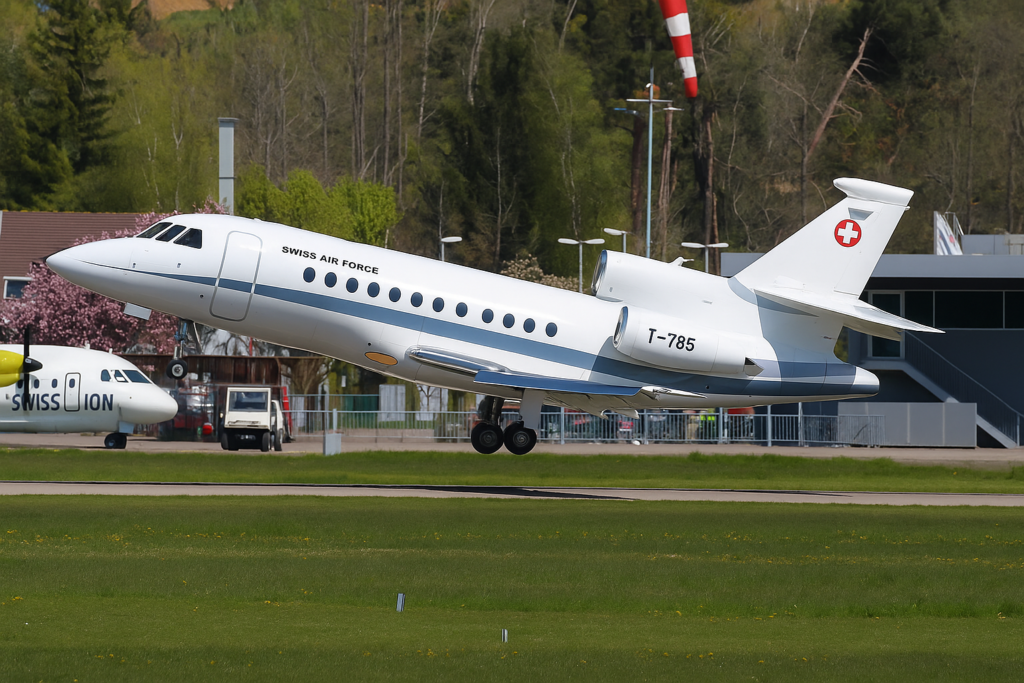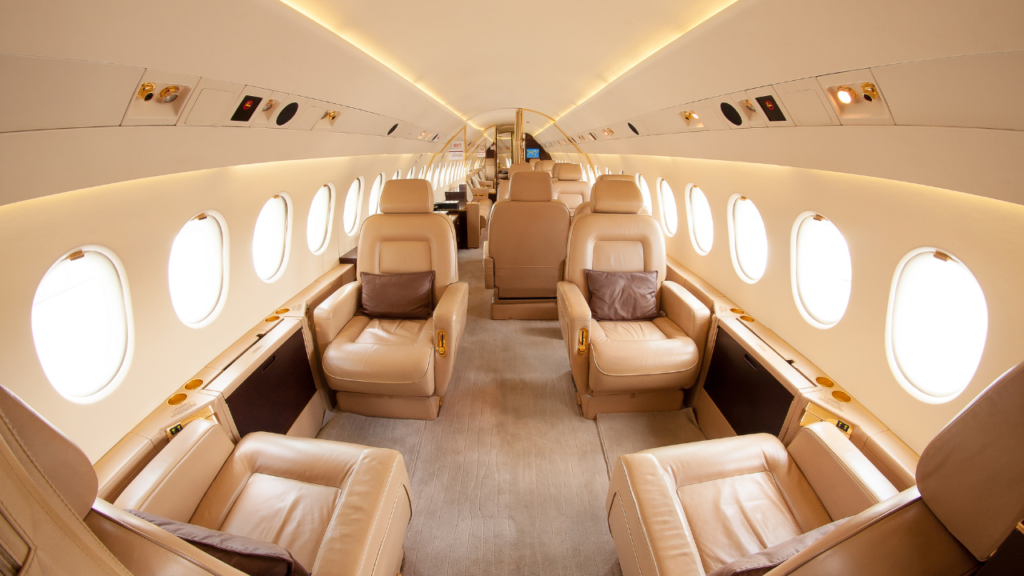How the Dassault Falcon 900 Series Was Born
The Dassault Falcon 900 line did not happen overnight or by accident, rather it was a calculated extension of the Falcon 50 with a plan to shake up the heavy business jet business in the mid 1980s. Dassault Aviation, the manufacturer of innovative military aircraft and with the successful business jets, the Falcon 20 and 50, had also identified a growing demand: a larger and more capable long-range aircraft and with the benefits of better cabin comfort and even more flexibility of operation.
Dassault retaliated by introducing the Falcon 900 which was a trijet with a different fuselage, expanded cabin and a longer range. It was not a mere next step towards something bigger, no, this was a shift that marked the tone of the next thirty years. Based on this, Dassault Falcon 900 series would be developed through a range of more and more sophisticated models each based on the previous one having a more intelligent avionic, superior engines, greater range and improved passenger comfort. In this article, we’ll explore how this legendary series developed technologically and commercially into one of the most respected names in business aviation.
The Original Falcon 900: A New Standard for Trijets
When the original Falcon 900 was launched in 1984 and entered service in 1986, it used a widebody cabin, low drag wings and three engines, the Honeywell TFE731-5AR-1C. This three-engine configuration offered it unique advantages: first-rate short-field capabilities, outstanding rates of climb and extra margin of safety of overwater work.
The Falcon 900 had a range of approximately 4,000 nautical miles, a cruising speed of Mach 0.80, which were able to fly between the major cities around the world. The comfortable cabin could accommodate between 12-14 passengers on seats and it was pressurized to allow comfort at high altitudes. This Falcon 900 was unique at the time as it had the longest range in its category of jets matched with the safety and efficiency of such.
Evolution of the Dassault Falcon 900 Series Models
Dassault Falcon 900B: More Range, More Refinement
The Falcon 900B model was introduced in 1991 only five years after the initial model. It appeared to be like its predecessor at first view but came with some serious in-house upgrades. Dassault replaced the engines of the aircraft, Honeywell TFE731 with newer models to provide better fuel burn rates and increased thrust. These improvements also increased the range to approximately 4,200 nautical miles which was a significant improvement when it came to travelling the Atlantic.
In the cabin, Dassault enhanced the insulation and ventilation systems which held down the noise levels and helped to give long-haul fliers a quieter space. The avionics package got an upgrade as well and this resulted in easier operations on the part of pilots. The Falcon 900B had the same reliability as the original but with an increase in the range of operating options and was thus best suited to corporate users, being able to go further without compromising amenity or performance.
Dassault Falcon 900EX: Long-Range Capability Achieved
The Falcon 900EX considerably increased the standards of the line in 1996. Dassault had released stronger and more effective Honeywell TFE731-60 engines that were not only high performing, but also saw to the low maintenance cost as time advanced. These fuel engines, along with extra fuel tanks, expanded the fly range of the aircraft up to an amazing 4,750 nautical miles, which is rather remarkable in its category.
This permitted around-the-clock service such as New York to Moscow or Paris to Tokyo which firmly established the 900EX as a real intercontinental jet. The airplane was also equipped with the new-generation glass cockpit, which substituted the analog dials with digital displays, increasing situational awareness and safety of pilots. Operators valued the 900EX because it was tough yet had state of the art systems, and was versatile. It was the model that became the face of the Falcon 900 line quite soon and remained popular to the beginning of 2000s.
Falcon 900C: Combining Modern Systems with Affordability
All operators did not require all of the 900EX capabilities; hence, in the early 2000s, Dassault built the Falcon 900C which shares most of the features of the previous model. It was developed to balance between pay and economy. The 900C had the same airframe as the EX and was fitted with much the same avionics upgrades, although slightly older TFE731-5BR engines were used and it had a smaller fuel capacity. This meant that the range of the aircraft was more like 4, 000 nautical miles.
The Falcon 900C offered its customer state-of-the-art flight safety and cabin improvements at a price that was not as high as the ultra long range version. It found a lot of popularity in Europe and Asia where regional jets and medium-range services operated largely where range wasn’t a big priority but the comfort and trijet layout of the Falcon was of great value.
Dassault Falcon 900EX EASy: Advanced Avionics for a New Era
The Falcon 900EX EASy which was introduced in the year 2004 is a revolutionary change in the cockpit experience. Dassault also collaborated with Honeywell in designing the EASy flight deck-Enhanced Avionics System– that presents a new interface entirely to the pilots. The EASy cockpit had four large flat-panel displays and navigation by cursor, the automation features designed to simplify even the most complex flight scenarios instead of crowded panels and a variety of dials.
It was an avionics package that provided the pilots with synthetic vision, improved weather monitoring, terrain awareness, and route optimization. It also ensured that single pilot workload management is much safer and easier. Despite all these huge cockpit advancements, the 900EX EASy did not change in range nor performance than its ancestor 900EX. The difference was the manner in which the plane was flown; the plane became more brain harnessed, data rich and pilot friendly.
The EASy platform would later be the standard cockpit arrangement on all Dassault models of the business jets, and the 900EX EASy would be the testbed of what would later become, the signature feature of an aircraft.
Falcon 900DX: Mid-Range Alternative with EASy Cockpit
Market feedback in 2005 created a need on the part of Dassault to provide a more affordable aircraft that would not sacrifice avionics or structure in order to meet that demand leading to the introduction of the Falcon 900DX. Based on the same airframe and EASy cockpit as the 900EX EASy, it was equipped with a smaller capacity fuel tank with consequent smaller range, about 4,100 nautical miles.
The 900DX occupied a very niche place. It was created to suit the customers who were not in need of long intercontinental flight yet desired to possess the security of a trijet model and capabilities of the EASy cockpit. It suited high frequency regional travel, particularly in North America and Europe, where the shorter legs and overall lower operating costs enabled the operators to take advantage of the shorter legs and lower operating costs and still enjoy all the performance and cabin luxury of the Falcon brand. The trijet was also highly adaptable and balanced enough to do well in airports with hot-and-high conditions or shorter runways.
Dassault Falcon 900LX: The Final Evolution
Dassault presented the most modern and the last modification of the Dassault Falcon 900 family in the year 2010, the Falcon 900LX. This model presented a number of significant improvements and became the top model of the 900 line.
How you can notice the difference most of all? Blended winglets, created together with aviation partners, which contributed greatly to the improvement of aerodynamics. These winglets made the aircraft appear more sleek and at the same time saved about 5 percent fuel burn, expanded its range by 10 percent to 4,750 nautical miles, as well as corrected its climb and cruise capabilities.
Falcon 900LX also kept EASy II flight deck with such features as synthetic vision, auto descent and better weather radar. Dassault had been supplying new materials, lighting systems and a flexible design in the cabins to match the newer aircrafts coming into the industry. Due to the upgrades, the 900LX has continued to be popular with new buyers and is currently still in production today, whilst it carries on the tradition of the original Falcon 900.
How the Falcon 900 Series Transformed Dassault’s Jet Strategy
Dassault Falcon 900 series served very well to define the long-term Dassault Aviation business jet strategy. Prior to the Falcon 900, Dassault had a good reputation in midsize jets, but with the dawn of this larger trijet, Dassault could compete head to head with heavy jet producers such as the Gulfstream and Bombardiers. The 900 series showed that Dassault was capable of designing and maintaining a long-range aircraft that fulfilled the requirements of the global travellers, corporate entities and government fleets.
Every model in the line-up served a purpose, the basic Falcon 900 introduced a capacious widebody cabin with stability of trijet configuration, 900B model increased range, 900EX and LX extended the aircraft range into true intercontinental, and the 900 C and DX had operational special-purpose uses. Dassault proved to be versatile with every new version to evolve a mainframe without losing track of quality, safety or customer comfort. This accomplishment paved the way to even greater jets such as the Falcon 7X, 8X and the new model the Falcon 10X. The Falcon 900 series was not merely a closing of a market gap, but it served as a strategic launching pad that gave Dassault a path of gaining entry in the ultra-long-range and large-cabin market.
The Legacy and Future of the Dassault Falcon 900 Series
The series has made a significant impression on the industry since it has delivered more than 500 units of Falcon 900 series. Lots of them are still flying up to this day as evidence of their quality in terms of the build and how they tend to perform.
Dassault has now moved on to more contemporary jets such as the Falcon 6X and the next one hallmarked to be the Falcon 10X, but the 900LX is still in production meaning that the market is still very strong to this balanced trijet. In the meantime, Dassault maintains old 900 models with avionics upgrade, connectivity solution, and sustainability programs, including compatibility with the Sustainable Aviation Fuel (SAF).
The Falcon 900 series is also aging, still it has not lost its relevance. As the industry of business aviation develops, it sets the example of how an entity can change itself by creating innovations without losing a key to its original identity.



